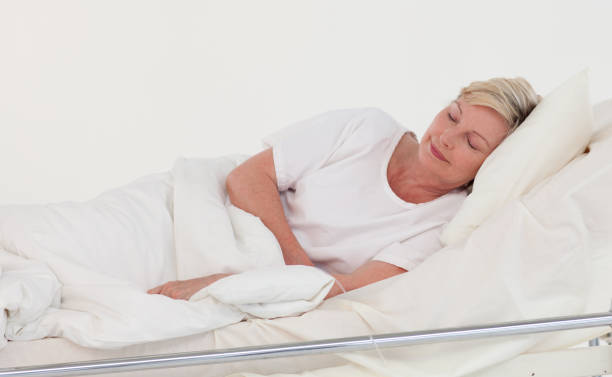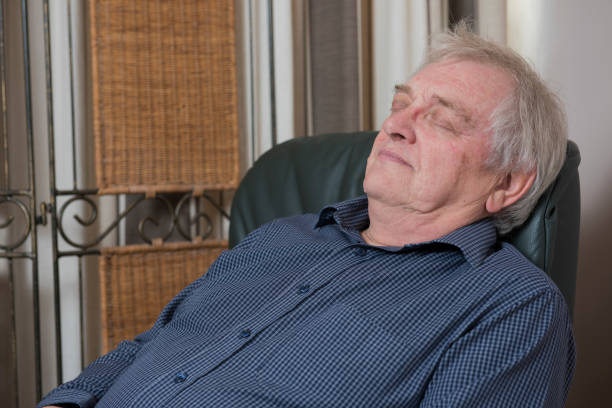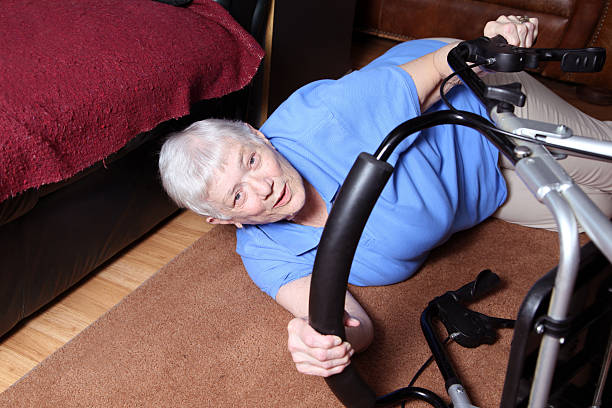Introduction

It can be difficult for Parkinson's Disease (PD) patients to predict and manage sleep disturbances. This can lead to issues with mobility during sleeping hours, causing donors immense distress. But researchers are working together to diagnose and treat such problems properly, leading us ever closer to better solutions for PD-related issues.
In this blog post, we'll explore the effects of disturbed sleep on mobility in those living with the condition, looking at how medical professionals deal with this issue. By understanding existing challenges and potential treatments currently being used or studied, we can provide greater insight into strategies to help these individuals live as comfortably as possible throughout their journey with PD.
Overview of Parkinson's Disease and Its Effects on Mobility
Parkinson's disease is a degenerative disorder of the central nervous system which affects motor skills, speech, and other physical abilities. Symptoms usually appear slowly over time, including tremors, rigidity, slowed movements, impaired balance, and difficulty walking or speaking. As the condition progresses, these symptoms become more severe and can cause mobility issues during sleep. To effectively assess and treat these mobility changes, healthcare providers need to understand the impact of Parkinson's on mobility during sleep.
What Causes Parkinson's Symptoms to Change During Sleep Periods

Parkinson's Disease (PD) is a progressive neurological condition that can cause difficulty with movement and coordination. Symptoms of PD include tremors, slowed movements, rigidity, and impaired balance.
These symptoms frequently worsen as the disease progresses or during certain activities such as sleep. Research has indicated that different sleeping stages may trigger changes in mobility due to the body's lower activity and reduced ability to respond to stimuli.
Assessing mobility changes during sleep is important for monitoring PD symptoms and providing treatment interventions. Recent studies have shown that PD patients often experience a shift in motor performance at night, with symptoms worsening as they enter deep sleep stages. This can lead to impaired balance and an increased risk of falls.
Researchers have developed various monitoring methods and tools to better assess mobility changes during sleep. These include actigraphy, which involves using wrist-worn activity monitors to track motion levels; heart rate variability (HRV) analysis, which looks at the interactions between heartbeats as they vary in time; and polysomnography, which utilizes EEG signals to measure brain activity.
By monitoring mobility changes in PD patients during sleep periods, clinicians can better understand how the disease progresses and adjust their treatment plans accordingly. This can improve outcomes for people with PD by helping them manage their symptoms more effectively during the day and at night.
How Sleep Plays a Role in Parkinson's Patients' Mobility Changes

The role of sleep in assessing mobility changes during sleep periods in Parkinson's patients is essential. Sleep disturbances are common among individuals with Parkinson's disease, and their quality of life can be significantly impacted by insufficient sleep. Studies have found that motion during the night can provide insights into a patient's physical symptoms, including tremors and bradykinesia.
One of the main goals of assessing mobility changes during sleep periods in Parkinson's patients is to understand how rest affects their symptoms. By gathering data on a patient's movements during sleep, doctors can have an accurate picture of what these individuals experience while they are not active. This can help them identify potential problems, such as sleep apnea or other issues affecting the patient's mobility.
Another way to assess mobility changes during sleep periods that can give doctors an insight into their patients' well-being is by providing information on how physical symptoms evolve.
By gathering data from multiple nights of rest, they can see how a patient's mobility changes during different night stages and track any fluctuations in physical abilities. This can help identify any underlying physical problems impacting the patient and inform their treatment decisions.
Ultimately, assessing mobility changes during sleep periods in Parkinson's patients can give doctors a comprehensive understanding of how rest affects their patients' symptoms and physical abilities.
This can be essential for providing the most effective care possible and monitoring a patient's progress. By gathering this data, doctors can accurately understand how their patients are doing and make any necessary adjustments to their treatment plans.
Methods Used to Assess Mobility Changes During Sleep Periods in Parkinson's Patients
Researchers use various methods to assess changes in mobility during sleep periods in Parkinson's patients. Some of the more common assessment techniques include:
1. Actigraphy
This method uses an actigraph, or motion sensor device, worn on the wrist like a watch and records movements throughout the day and night. By analyzing the data from the actigraph, researchers can monitor changes in activity levels and sleep patterns during sleep periods.
2. Polysomnography
This method uses advanced technology to track brain waves (EEGs), heart rhythms (ECGs), breathing rates, body movements, and other important measurements while a patient is asleep. By monitoring these changes during sleep periods, researchers can gain valuable insights into the effects of Parkinson's on mobility.
3. Self-reporting
This method involves patients reporting on their sleeping habits and activity levels daily/night via questionnaires or other assessment tools. Although this method is less accurate than actigraphy or polysomnography, it can still provide valuable information about changes in mobility during sleep periods.
The data gathered from these assessment techniques can then be used to create individualized treatment plans and to identify potential strategies for managing the effects of Parkinson's on mobility. With the right treatments, patients with Parkinson's can experience improved sleep patterns and increased mobility.
The Positives and Negatives of Sleep for Those With Parkinson's
Sleep is essential for everyone's health, including those with Parkinson's disease. Studies have shown that inadequate or disrupted sleep can increase the severity of symptoms associated with the condition. In particular, a lack of restful sleep can worsen motor symptoms such as tremors and rigidity.
On the other hand, getting enough quality sleep can help reduce the risk of developing Parkinson's symptoms and improve existing ones. It is crucial to evaluate any changes in mobility during sleep in patients with Parkinson's disease.
This can provide insight into how well an individual can tolerate their condition, as well as potential treatments or lifestyle modifications that could be beneficial.
One way to measure changes in sleep mobility is through wearables such as activity monitors and smartwatches. These devices can track various parameters related to sleep, including restlessness and time spent awake.
By tracking these metrics, healthcare professionals can gain valuable insight into how an individual's ability to move varies with different levels of sleep. This can help them assess how well a patient tolerates their condition and provide opportunities for intervention when needed.
Ultimately, assessing mobility changes during sleep periods in Parkinson's patients is essential for optimizing health outcomes. By leveraging wearable technologies, healthcare providers can gain valuable insight into an individual's ability to manage their condition and provide the best possible care.
Tips for Improving Mobility During Sleep for Parkinson's Patients
For Parkinson's patients, one of the best ways to improve mobility during sleep is to use therapies and techniques focusing on physical activity. Exercise helps promote better circulation, muscle strength, coordination, balance, and overall mobility.
Regular stretching can help reduce stiffening in muscles and increase the range of motion. Yoga poses or tai chi movements can help relax the body and improve mobility.
By assessing the sleep patterns of Parkinson's patients, professionals can gain insight into how the disease affects mobility and develop strategies, such as using mobility-enhancing garment and sheet sets, to improve it. Regular assessments of movement during sleep periods can show which activities or therapies positively affect mobility and which could be harmful.
For instance, alternate activities should be explored if physical activity worsens mobility during sleep. In addition to physical activity and assessment, medications or supplements may be prescribed as part of a treatment plan for improved mobility during sleep periods.
Medications can help reduce muscle spasms, relax the body, and control other Parkinson's symptoms. Supplements such as fish oil or vitamin D can also help improve mobility by providing essential nutrients for strengthening muscles and improving balance.
A healthy diet and lifestyle are crucial for managing Parkinson's symptoms and enhancing mobility during sleep periods. Eating a balanced diet with plenty of fruits, vegetables, whole grains, lean proteins, and healthy fats can help regulate energy levels and improve overall well-being. Establishing regular sleep patterns and avoiding excessive stress can also help improve mobility during sleep.
How to Manage and Monitor Patients with Parkinson's for Mobility Changes During Sleep Periods

Parkinson's disease is a neurodegenerative disorder that affects movement, often leading to tremors and difficulty walking. While Parkinson's can be managed through medication and lifestyle changes, healthcare professionals must closely monitor patients for mobility changes during sleep periods. This type of assessment helps doctors identify any potential problems or changes in the patient's mobility that require further attention.
Wearable technology is one of the most effective ways to assess and monitor a patient's mobility during sleep. Wearable technology such as activity trackers can collect data on a person's movements, including gait or walking speed changes. This data can then be analyzed over time to identify any potential changes that may have occurred due to Parkinson's.
In addition, healthcare professionals can conduct physical assessments of the patient during sleep. This involves assessing the patient's balance and posture while asleep and a range of motion test. A physical assessment can help doctors identify any mobility issues caused by Parkinson's.
Finally, healthcare professionals may use diagnostic tools to assess mobility during sleep. These tools can include imaging techniques such as MRI or CT scans and laboratory tests. These tests can provide a more detailed look at the patient's condition and help doctors identify any mobility-related changes related to Parkinson's.
By monitoring Parkinson's patients for mobility changes during sleep periods, healthcare professionals can better understand their condition and ensure they receive the best care possible. Through wearable technology, physical assessments, and diagnostic tools, healthcare professionals can accurately assess and monitor patients with Parkinson's for mobility changes during sleep.
Common Challenges People with Parkinson's Face When Addressing Sleep-related Mobility Issues
People with Parkinson's disease often experience difficulty with mobility during sleep periods. This can include trouble falling asleep because of muscle stiffness or jerky movements, difficulty maintaining steady breathing patterns, and reduced motor coordination during physical activity. The mentioned symptoms can majorly impact the quality of sleep and overall health.
To address these sleep-related mobility issues, it is important to monitor the changes in mobility during sleep. This can help improve treatment plans and provide a better understanding of how Parkinson's affects motor skills during sleep periods.
FAQs
Do you move in your sleep with Parkinson's?
Yes, people with Parkinson's may experience mobility changes during sleep periods. Those affected by the disease may have difficulty staying still while sleeping and can move around more than normal in their bed or chair. One study found that 49% of patients experienced at least one type of movement during sleep, such as restlessness, rocking, turning, and shaking.
Can you stop the mobility changes during sleep?
There is no one-size-fits-all solution to managing mobility changes during sleep in Parkinson's patients. However, various strategies can help reduce the frequency and intensity of these movements.
Some simple lifestyle changes, such as changing sleeping positions or using relaxation techniques in bed, can make a big. In addition, medications and therapies such as deep brain stimulation may also be used to reduce mobility changes during sleep.
What are the sleep disturbances in Parkinsonism?
Individuals with Parkinson's disease may face various sleep-related issues, such as struggling to fall or stay asleep, feeling excessively sleepy during the daytime, and experiencing unusual movements while sleeping.
Sleep-related problems such as restlessness, rocking, turning, and shaking can also lead to disrupted slumber. In addition, some Parkinson's medications can cause insomnia or other nighttime issues. It is important for those affected by Parkinson's to discuss any sleep concerns with their doctor.
What is the best way to assess changes during sleep periods in Parkinson's patients?
The best way to assess changes during sleep periods in Parkinson's patients is through careful observation. If you or a loved one is affected by Parkinson's, it is important to take note of any unusual movements or behaviors during rest periods. Additionally, keeping a sleep log and monitoring changes in sleeping patterns can help you identify any potential issues related to mobility changes during sleep.
Conclusion
It is clear from these findings that sleep plays an integral role in altering mobility for Parkinson's patients. Gaining more insight into these changes can help healthcare providers and patients work together to better manage the disease.
Ultimately, this knowledge could improve the quality of life for those with Parkinson's. With the right treatment plan and mindful habits, such as getting enough rest, exercising regularly, and eating a balanced diet, many people with Parkinson's can better cope with their symptoms. By understanding how sleep affects mobility in individuals with the disease, they can take greater control over their bodies and live more comfortable lives.

